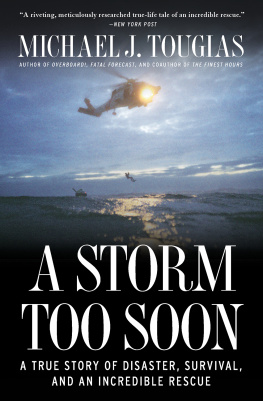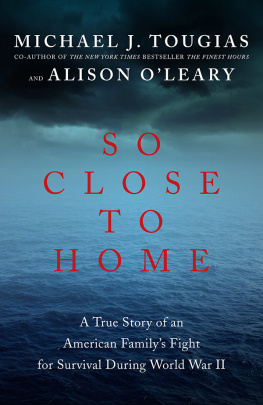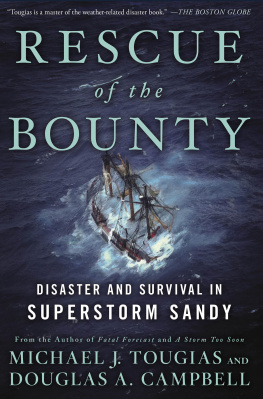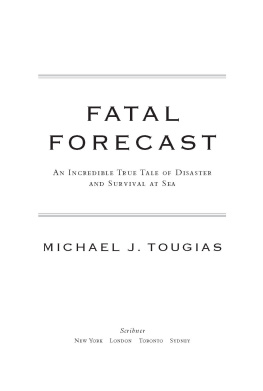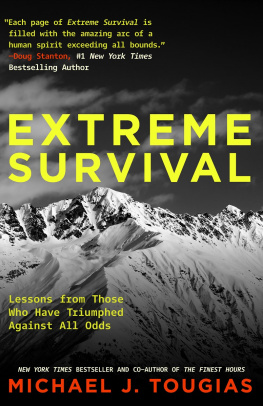Michael J. Tougias - Attacked at Sea: A True World War II Story of a Familys Fight for Survival
Here you can read online Michael J. Tougias - Attacked at Sea: A True World War II Story of a Familys Fight for Survival full text of the book (entire story) in english for free. Download pdf and epub, get meaning, cover and reviews about this ebook. year: 2020, publisher: Henry Holt and Co. (BYR), genre: Adventure. Description of the work, (preface) as well as reviews are available. Best literature library LitArk.com created for fans of good reading and offers a wide selection of genres:
Romance novel
Science fiction
Adventure
Detective
Science
History
Home and family
Prose
Art
Politics
Computer
Non-fiction
Religion
Business
Children
Humor
Choose a favorite category and find really read worthwhile books. Enjoy immersion in the world of imagination, feel the emotions of the characters or learn something new for yourself, make an fascinating discovery.

- Book:Attacked at Sea: A True World War II Story of a Familys Fight for Survival
- Author:
- Publisher:Henry Holt and Co. (BYR)
- Genre:
- Year:2020
- Rating:4 / 5
- Favourites:Add to favourites
- Your mark:
- 80
- 1
- 2
- 3
- 4
- 5
Attacked at Sea: A True World War II Story of a Familys Fight for Survival: summary, description and annotation
We offer to read an annotation, description, summary or preface (depends on what the author of the book "Attacked at Sea: A True World War II Story of a Familys Fight for Survival" wrote himself). If you haven't found the necessary information about the book — write in the comments, we will try to find it.
Attacked at Sea: A True World War II Story of a Familys Fight for Survival — read online for free the complete book (whole text) full work
Below is the text of the book, divided by pages. System saving the place of the last page read, allows you to conveniently read the book "Attacked at Sea: A True World War II Story of a Familys Fight for Survival" online for free, without having to search again every time where you left off. Put a bookmark, and you can go to the page where you finished reading at any time.
Font size:
Interval:
Bookmark:
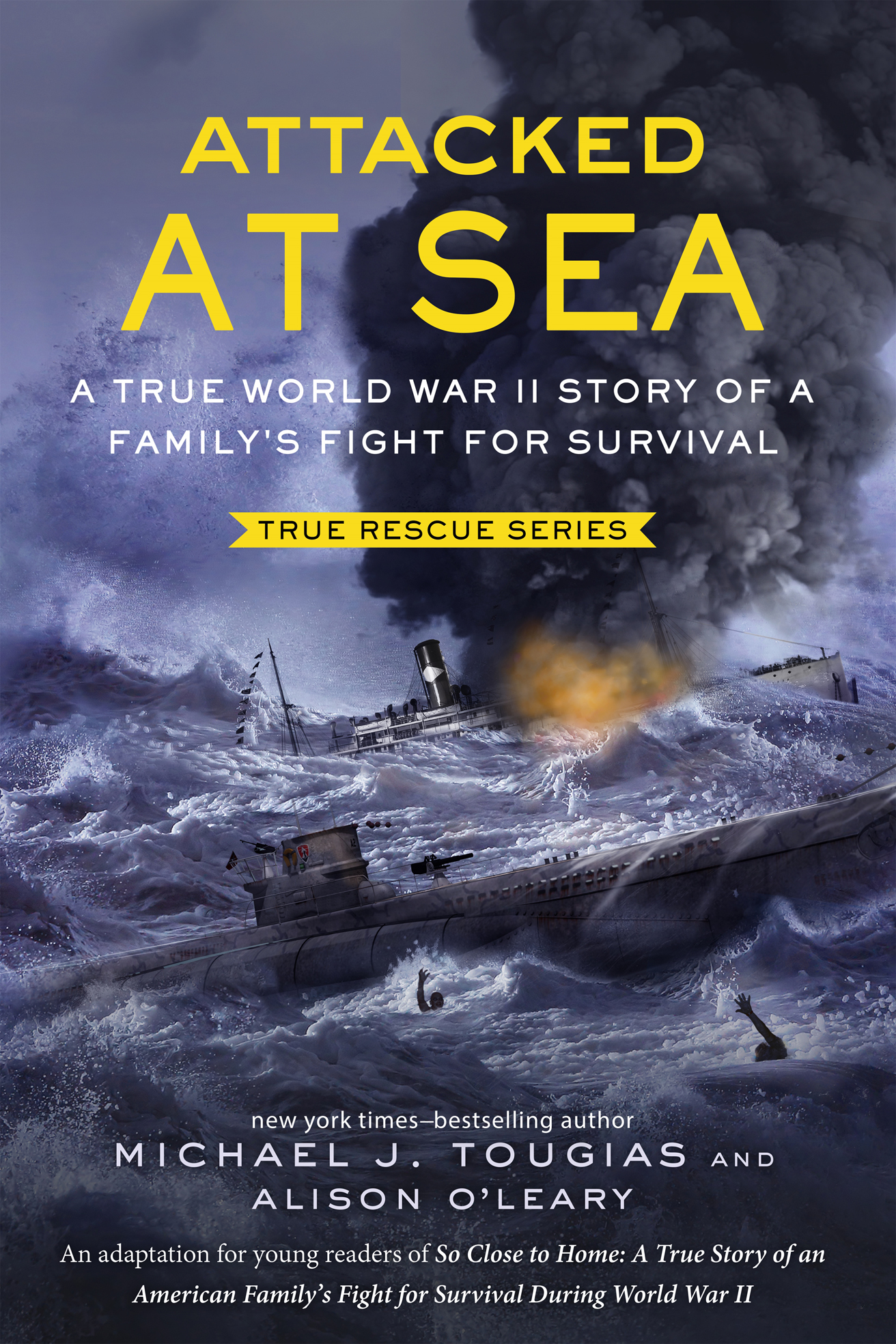

The author and publisher have provided this e-book to you for your personal use only. You may not make this e-book publicly available in any way. Copyright infringement is against the law. If you believe the copy of this e-book you are reading infringes on the authors copyright, please notify the publisher at: us.macmillanusa.com/piracy.
To the Downs Family: Ray, Ina, Lucille, Terry, and Sonny
World War II began when Nazi Germany invaded Poland in 1939 and Great Britain and France tried to halt the Nazi takeover of Europe. At that time the United States had not joined in the war. Tensions were high not only between the United States and Germany but also between the United States and imperial Japan. Like Germany, Japan had been invading other countries. The United States responded by not selling Japan any more oil. This was a serious blow to Japan, which imported 90 percent of its oil.
Despite the embargo, Japan refused to withdraw its troops from countries it had invaded. Japanese leaders believed that war with the United States would break out sooner or later. They decided that their best chance to win this war would be by striking first. Japan did that in a surprise attack on the U.S. Naval Base at Pearl Harbor in Hawaii on December 7, 1941.
Three days after Japan bombed Pearl Harbor, Nazi Germany also declared war on the United States. (Germany, Italy, and Japanthe main Axis powerswere engaged against the Allied nations, which included Great Britain, the United States, and the Soviet Union, in World War II.) One of the first acts taken by German leader Adolf Hitler against the United States was to send German submarines, called U-boats, toward American shores.
The U-boat commanders were instructed to take the war to North America and told that more U-boats would follow to ramp up the attacks. The detailed orders, written by Vice Admiral Karl Dnitz, gave the U-boat commanders the freedom to torpedo any large U.S. ship they came across. By sinking any big ships, including merchant ships in addition to U.S. Navy ships, Germany would hurt the entire U.S. war effort. This strategy would also reduce Americas capacity to transport fuel and supplies to its ally Great Britain and to strike back at Germany.
Each U-boat would keep track of the approximate tonnage of the ships it sank so that Dnitz and Hitler could measure the success of the plan. Called Unternehmen Paukenschlag, or Operation Drumbeat, the mission would bring devastation to the doorstep of the United States.
The United States was ill prepared to defend itself against the U-boats, even though the Britishwho had cracked the Enigma machine the Germans used to send coded messagesgave ample warning. The U.S. Navy had most of its limited resources deployed in the Pacific and had done little to prepare for the U-boat onslaught. Many coastal cities ignored blackout requests, while navigational buoys and lighthouses shone brightly, helping the enemy enter shipping lanes and establish positions for spotting ships. American freighters and tankers also traveled alone in coastal waters, rather than in convoys or groups, protected by warships. Many ships remained lighted and frequently used their radios, which the Germans monitored.
U-boat commanders could not believe their good fortune when they surfaced at night and saw the clear silhouette of a ship steaming by. Often, there were multiple targets to choose from, and commanders had to decide which one to home in on first.
U-boats sank approximately 170 ships off the eastern coast of North America and in the Caribbean in just four months, from January through April 1942. Finally, in May 1942, the United States improved aircraft surveillance of German subs while also experimenting with the convoy system. These changes, however, were employed only along the East Coast. Admiral Dnitz responded by simply diverting some of his subs to the Gulf of Mexico, where the good hunting could continue.
Two U-boats, U-506 and U-507, were the first to head toward the Gulf. Commanding U-506 was Erich Wrdemann, a young and daring opponent who had shown considerable skill. Wrdemanns hunt would take him deep into the Gulf, just off the coast of New Orleans, Louisiana, and toward a freighter, the SS Heredia, which carried the Downs family of San Antonio, Texas. This is the story of that family, U-boat 506, and what happened when their paths intersected on a May night in 1942.

Some experts think that if Hitler had had fifty more U-boats in 1939, he would probably have won the last war.
WOLFGANG FRANK, T HE S EA W OLVES
Eight-year-old Raymond Sonny Downs Jr. was disappointed by the drab gray freighter called Heredia looming above him at a port in Costa Rica. Sonny had steamed from the United States to South America 11 months earlier aboard a cruise liner with all the comforts of a five-star hotel. Now, on May 12, 1942, his return trip to the States would be aboard the Heredia. She was an old ship that primarily transported produce rather than pampered passengers. The big difference, however, between his earlier voyage and the one he was about to embark on was the risk. The United States had entered World War II five months earlier, and Germany had sent its U-boats toward the Americas for what they considered easy hunting.
Sonny was aware that war had broken out, but at this moment he was more intrigued by the giant cargo nets full of bananas that were being loaded onto the Heredia. He and his 11-year-old sister, Betty Lucille, who preferred the name Lucille over Betty, ran up the gangplank to the ships deck. From this vantage point they had a better view of the stevedores, the workers who loaded the vessel, stowing the cargo below.
Brown-eyed Lucille, who had a dimpled chin and stood a full head taller than Sonny, hadnt known there were this many bananas in all of Costa Rica and Colombia, where they had been living the past few months. Other workers were loading heavy sacks onto the ship. Sonny, never shy, asked a senior crew member of the Heredia what was in the sacks.
Coffee, young man, said the sailor. All bound for the U.S.
We thought so, said Lucille. We thought we could smell coffee.
Well, youre too young for coffee, but would you two like a Coke?
You bet! exclaimed Sonny.
Okay, follow me to the galley.
Lucille shouted down the gangplank, telling their parents they were going to the galley, where meals were prepared and served. The two kids skipped away, Sonny barefoot. Maybe this trip is going to be a good one, thought Sonny. It doesnt matter how old the ship is if the crew is nice.
Sonny was correct: It wasnt every day that children were on board the freighter, and the crew was more than accommodating. In fact, only six of the 62 people aboard the ship were civilian passengers. Six others were members of the navy, assigned to man the guns mounted on the highest deck. The rest of the people on board were crew members. And, yes, the 4,700-ton Heredia had steamed many a mile since shed been built 34 years before, in 1908. Powered by an oil-burning engine that turned a massive propeller, the steel ship was 378 feet long and had a large funnel that belched black smoke from the burned fuel.
Font size:
Interval:
Bookmark:
Similar books «Attacked at Sea: A True World War II Story of a Familys Fight for Survival»
Look at similar books to Attacked at Sea: A True World War II Story of a Familys Fight for Survival. We have selected literature similar in name and meaning in the hope of providing readers with more options to find new, interesting, not yet read works.
Discussion, reviews of the book Attacked at Sea: A True World War II Story of a Familys Fight for Survival and just readers' own opinions. Leave your comments, write what you think about the work, its meaning or the main characters. Specify what exactly you liked and what you didn't like, and why you think so.

